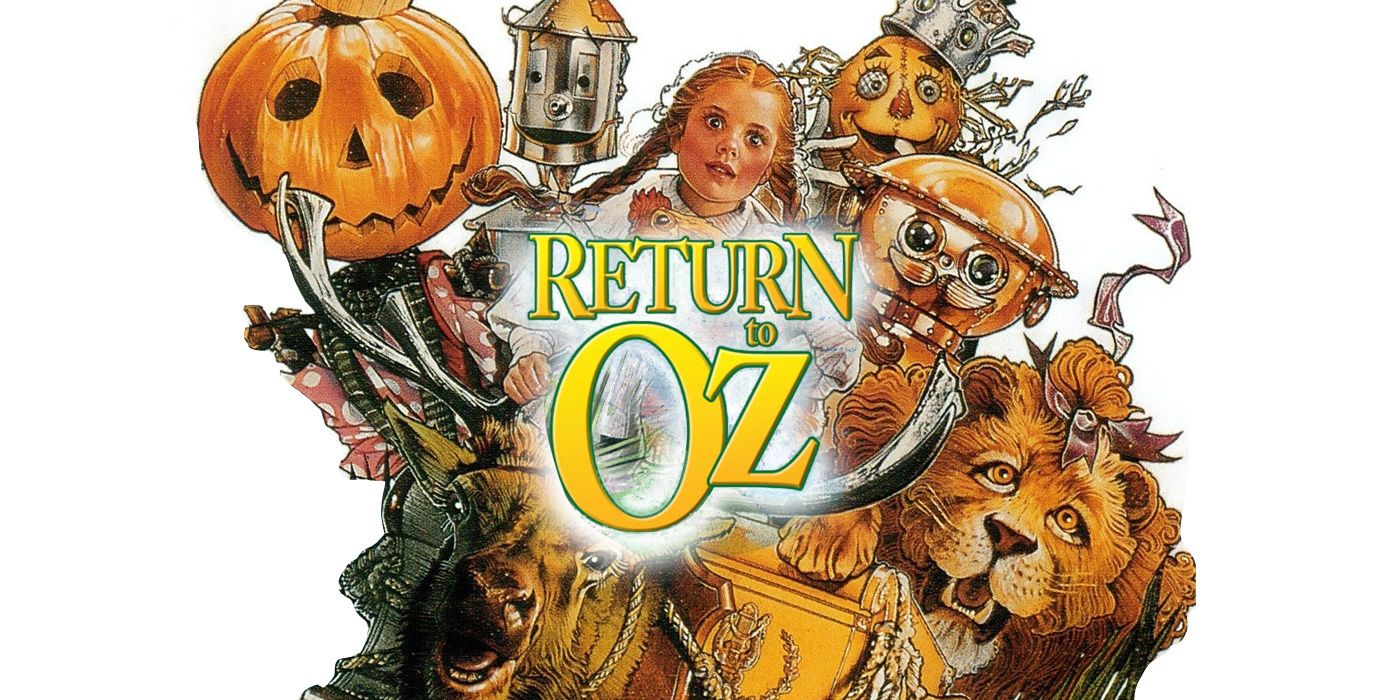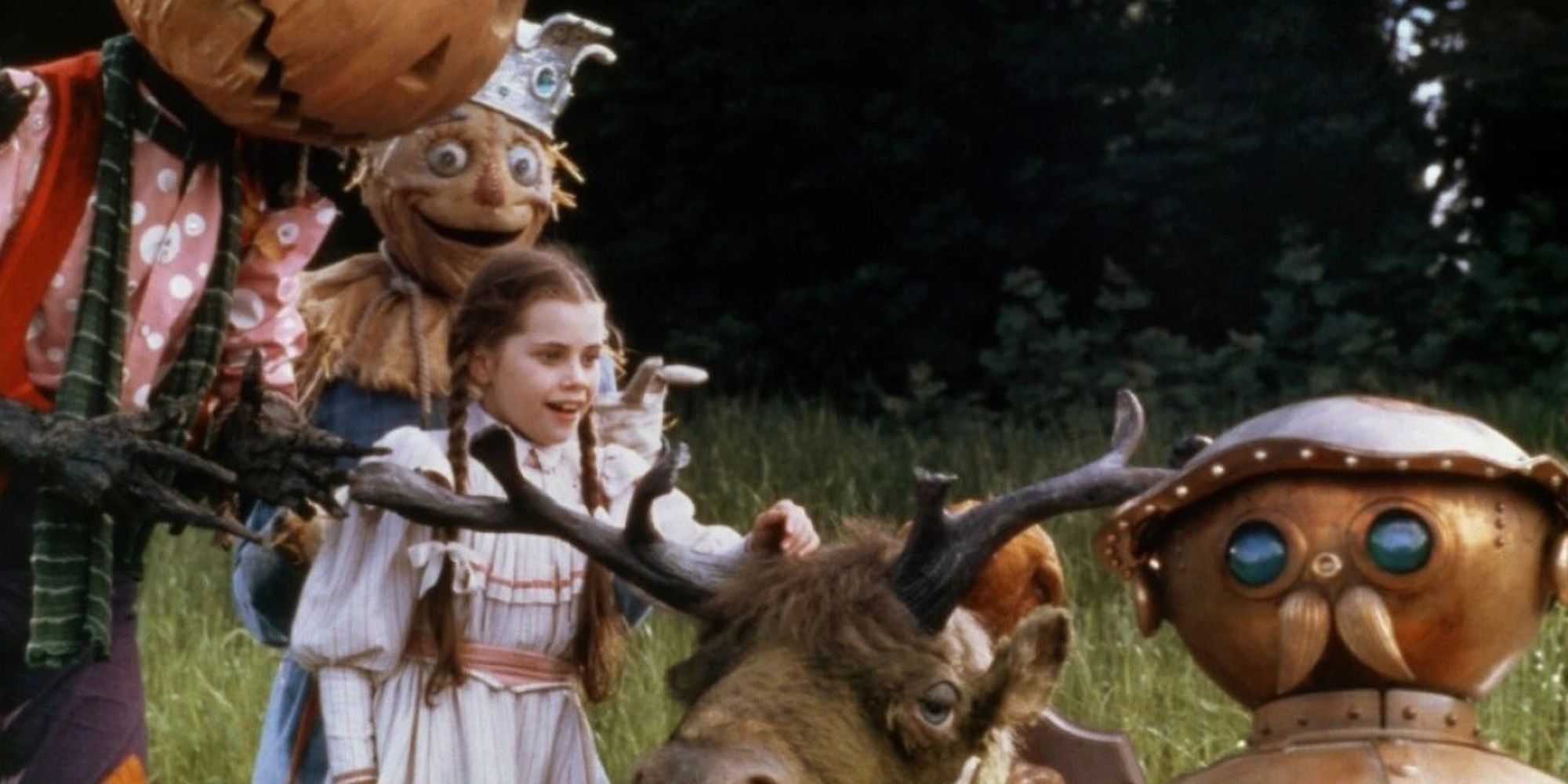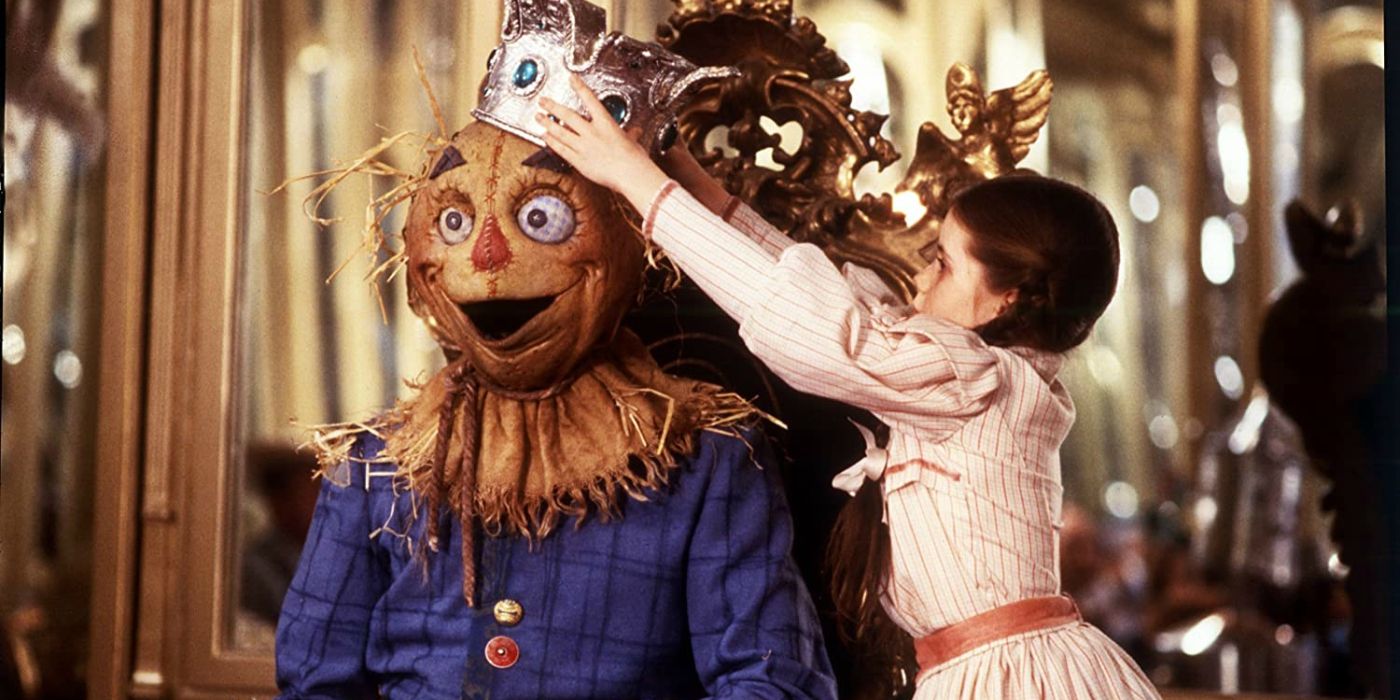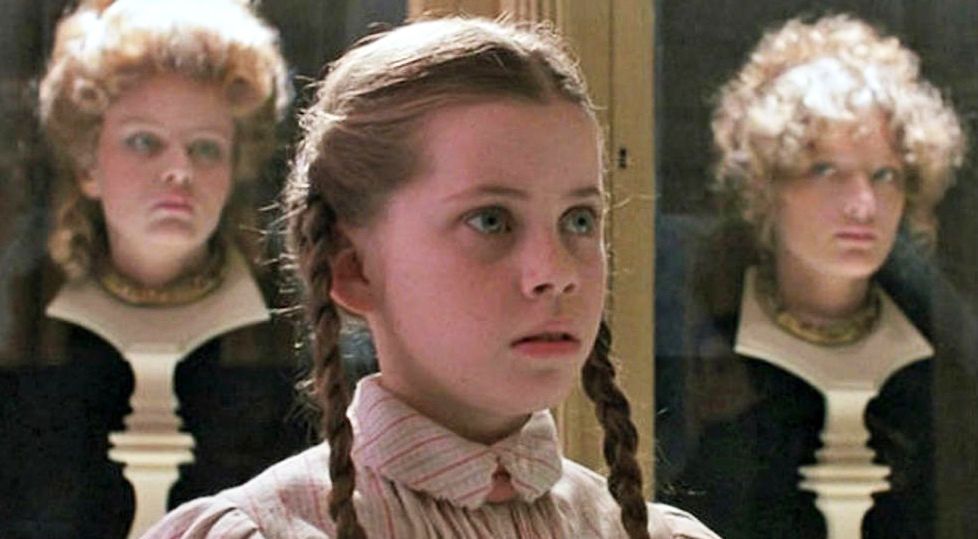When Disney acquired the film rights to L. Frank Baum’s Oz books in 1954, it took the company 30 years to finally produce a follow-up to the 1939 MGM classic, The Wizard of Oz. While Disney’s sequel Return to Oz experienced a troubled production process, rife with harsh conditions and shifting expectations, most of the controversy surrounding the film upon release was centered around the markedly dark and nightmarish tone. However, the 80s sequel didn’t take this approach just for the sake of distinguishing itself from its predecessor -- the people making it wanted it to be closer to Baum’s books. Looking past the general feeling of weirdness from the change in tone, Return to Oz warrants another watch because of how accurately it portrays Baum’s works, as both are fantastical veneers that barely obscure a festering pool of nightmares.
Whenever critics mention that Return to Oz taps into the darker elements of Baum’s world, it is usually dropped as a footnote, a curiosity in passing. Audiences and critics alike found it to be too horror-tinged in comparison to the family friendly classic, claiming that it is unsuitable for its intended audience of youngsters. But it is because of these darker elements that Return to Oz represents the land of Oz more accurately than any other on-screen adaptation to date. Many of the same tactics Baum employs in creating Oz are the same ones used in Return to Oz. Shouldn’t these tactics have repulsed child readers, rather than caused them to clamor for more and more books? They were so wildly popular that Baum, by his own admission, felt strong-armed into writing more Oz books, as he felt it was the only world in which he could tell his stories that children would read.
After the success of the first novel, The Wonderful Wizard of Oz, Baum had no intention of writing a sequel. However, due to the large letter-writing campaign from young fans, Baum was convinced to expand upon the world of Oz in additional stories. The Oz books were his best-selling works, but Baum felt trapped by his success and he wanted to step away from Oz to write other stories. In the introduction of one of his later books, Baum nearly pleads with his readers to let him tell other stories. Baum came to realize that Oz was his only avenue to keep earning from his writing, but he also felt a sense of true obligation to his young fans who loved the stories so much. This loyalty to his readers is reflected in his well-known quote, “To please a child is a sweet and lovely thing that warms one’s heart and brings its own reward.” Baum wrote a total of 14 books in the series. Though he occasionally alluded to ending the series in various introductions, Baum wrote Oz books until the day he died.
As a result, the themes contained in the Oz books became increasingly complex as he worked these other stories he wanted to tell into Oz, and many of the territorial conflicts that he tells about the larger land of Nonestica began to reflect struggles in the real world. Subsequent books tackled large ideas like industrial capitalism, slavery, imperialist violence, and chauvinism. Though Baum was no great progressive by modern standards, he stated that he wanted to spin fairy tales the likes of Grimm and Andersen for the children of his time. In the introduction of his first book, he says that it “aspires to be a modernized fairy tale, in which the wonderment and joy are retained and the heartaches and nightmares are left out.” He wanted to eliminate “all the horrible and blood-curdling incidents devised by their authors to point a fearsome moral to each tale.” However, judging by the violence present in the early Oz books, all Baum really managed to do was eliminate a moral reason for the violence being showcased. Rather than the violence teaching children a lesson of some kind, violence occurs for seemingly no reason at all beyond overcoming obstacles.
In The Wonderful Wizard of Oz, Dorothy and her friends are beset by a pack of fearsome wolves sent by the Wicked Witch of the West to “tear them into small pieces.” This scene is not adapted by the 1939 film, and for an obvious reason: The Tin Woodman decapitates all 40 of the wolves, “so that at last they all lay dead in a heap before the Woodman.” Immediately after, the Witch sends a flock of 40 crows to peck their eyes out, and the Scarecrow breaks all of their necks. “There were forty crows, and forty times the Scarecrow twisted a neck, until at last all were lying dead beside him.” The party then unceremoniously continues on their way. The Cowardly Lion later kills a giant spider, but seeing as that’s kind of standard fare for the fantasy genre, that can slide. This kind of casual violence crops up throughout the books until Baum eventually eases up and starts forcing our heroes to implement non-violent solutions for dealing with threats during their adventures. This early violence contributes greatly to the foreboding feeling in Oz books.
Another recurring theme that often accompanies the wanton violence is Baum’s propensity for the use of body horror. In the Oz books, the Scarecrow has his straw stuffing pulled entirely out of him. The Tin Woodman was once a regular man, until the Wicked Witch of the East bewitched his axe so that it would chop off his limbs and head one by one. Jack Pumpkinhead’s head is constantly rotting, and he is at one time pulled limb from limb; Princess Langwidere freely removes and attaches her extensive collection of heads to and from her body. Mombi threatens to turn Tip into a marble statue. The Gump is assembled from furniture and brought to life, only to then request disassembly. The Bumpy Man is exactly what he sounds like: a man with bumps all over his entire body.
The number of times heroes and villains are transformed or broken into pieces are too many to count. The lack of agency that the characters in Baum’s books retain over their own bodies establishes a pattern of visceral unease, striking in children a kind of primal fear. This pattern sends a message: Nothing is sacred, nothing is permanent, and every tangible aspect of your self-image can be upended in an instant while in the land of Oz. One must wonder why Baum so often resorted to dismemberment and augmentation to create terror in his fantasies. Perhaps it is related to Baum's inspiration for the character of the Scarecrow – his recurring nightmare as a child, of a scarecrow chasing him and attempting to strangle him before its body falls apart before his eyes. Despite Baum’s intent to sanitize children’s fairy tales, it seems that he left quite a bit of nightmares baked into his Oz stories.
Film historian Aljean Armet writes in The Making of The Wizard of Oz (1977) that during development of the 1939 film adaptation, the producer’s assistant William H. Cannon suggested dialing back on the fantasy elements of the original story, the reason being that recent fantasy films had not been commercially successful. After several rewrites from nearly a dozen screenwriters, the final product stayed mostly true to the fantastical appeal of Baum’s book, while shying away from its morbid undertones. It wasn’t the first time Baum’s work was watered down. In his original manuscript for Glinda of Oz, Baum described the character of Red Reera as a skeleton with wired-together bones and glowing red eyes in its sockets. The final print of the book removed this depiction altogether in favor of something more friendly.
When it came time to develop Return to Oz, Executive Producer Gary Kurtz knew that it was this recurring feeling of terror they would need to tap into in order to stay more in line with Baum’s books than the 1939 film did. Whereas MGM had scrubbed nearly all reference to the body horror inherent to Baum’s characters (save for the rusting of the Tin Woodman), Disney leaned into it. Near the beginning of the film, Dorothy (Fairuza Balk) correctly relates the Tin Woodman’s origin story to Dr. Worley (Nicol Williamson), which may seem absurdly gruesome to those who have never read the books. She knows about the Deadly Desert and that its sands will turn anyone who touches them into dust. This version of Dorothy remembers the events of Baum's first book, rather than the events of the MGM film.
The sequel’s Jack Pumpkinhead (Brian Henson) is concerned with his head rotting, and he is found in a disassembled state, often falling apart yet again. The Gump’s (Lyle Conway) birth into consciousness is lifted from the text nearly exactly, and although he does not request disassembly, he breaks apart during flight. Tik-Tok’s (Tim Rose) control over his own faculties is governed by the wind-up keys on his back – once they stop winding, he loses motor and brain function. Dorothy’s old friends are turned into statues, or into ornaments. The witch Mombi (Jean Marsh) is combined with Princess Langwidere into one character, directly adapting the latter’s collection of heads. A frightening sequence in which Dorothy awakens the glass-encased heads leads into a screaming cacophony while Mombi’s headless body chases after her. The Nome King’s (Williamson) form is constantly shifting between surreal claymation and live-action acting, and once defeated, his body dramatically crumbles apart as hellfire surges in the background.
Over and over, Return to Oz mirrors Baum’s grim fascination with the degradation of bodily integrity and autonomy. The terrifying Wheelies are themselves a disturbing perversion of human form, and are heavily inspired by Baum’s descriptions of them in Ozma of Oz. They are brightly colored visions of dysmorphic monsters who have wheels where hands and feet should be. Their constant squeaking and the shocking squelching noises they use to call to each other are all at once amusing and terrifying. Although Disney characteristically shies away from the kind of casual violence in Baum’s books, the Wheelies do threaten, in their lunatic voices, to tear Dorothy into pieces.
Return finds other ways to explore the deep unease that permeates the land of Oz, mainly in its atmosphere. The sanitarium is featureless and claustrophobic, with distant screams echoing through the halls. Much of the action takes place in dusty rooms, ruined stone courtyards, or antique-filled halls with mirrors for walls – all environments that invoke a feeling in children of being lost in a strange, liminal world in which everything feels nostalgic yet unfamiliar. Tones of underground hellfire and desolation are ever-present in this version of Oz – the Emerald City is ruined, the yellow brick road is destroyed, and the Nome King rules a vast labyrinth of rock that at any moment can spawn the demonic faces of his minions.
The creatives behind Return to Oz understood that Oz is a topsy-turvy land where nothing is quite as it seems, akin to Lewis Carroll’s Wonderland, by which Baum was heavily inspired. Unlike Wonderland, Oz is deeply rooted in sadness and terror from its inception; Dorothy is named after Baum’s niece who died as an infant. The now quaint depictions of flying monkeys and green-skinned witches would simply not do for an audience in 1985. By delving into the belly of Baum’s most twisted imagined creations, Return to Oz crafts an odyssey for Dorothy that accurately captures the dread and danger of the bizarre world depicted in the books. Although it’s understandable that audiences at the time rejected Baum’s funhouse world come-to-life, there’s a reason Return to Oz has remained a cult classic. Baum tried, and mostly failed, to make a fairy tale devoid of horror and violence. Return to Oz embodies what makes Baum’s series so memorable: it gives us a land of terror dressed up as innocent fantasy, yet try as it might to keep up the facade, it frequently peels away to reveal the nightmare underneath.




